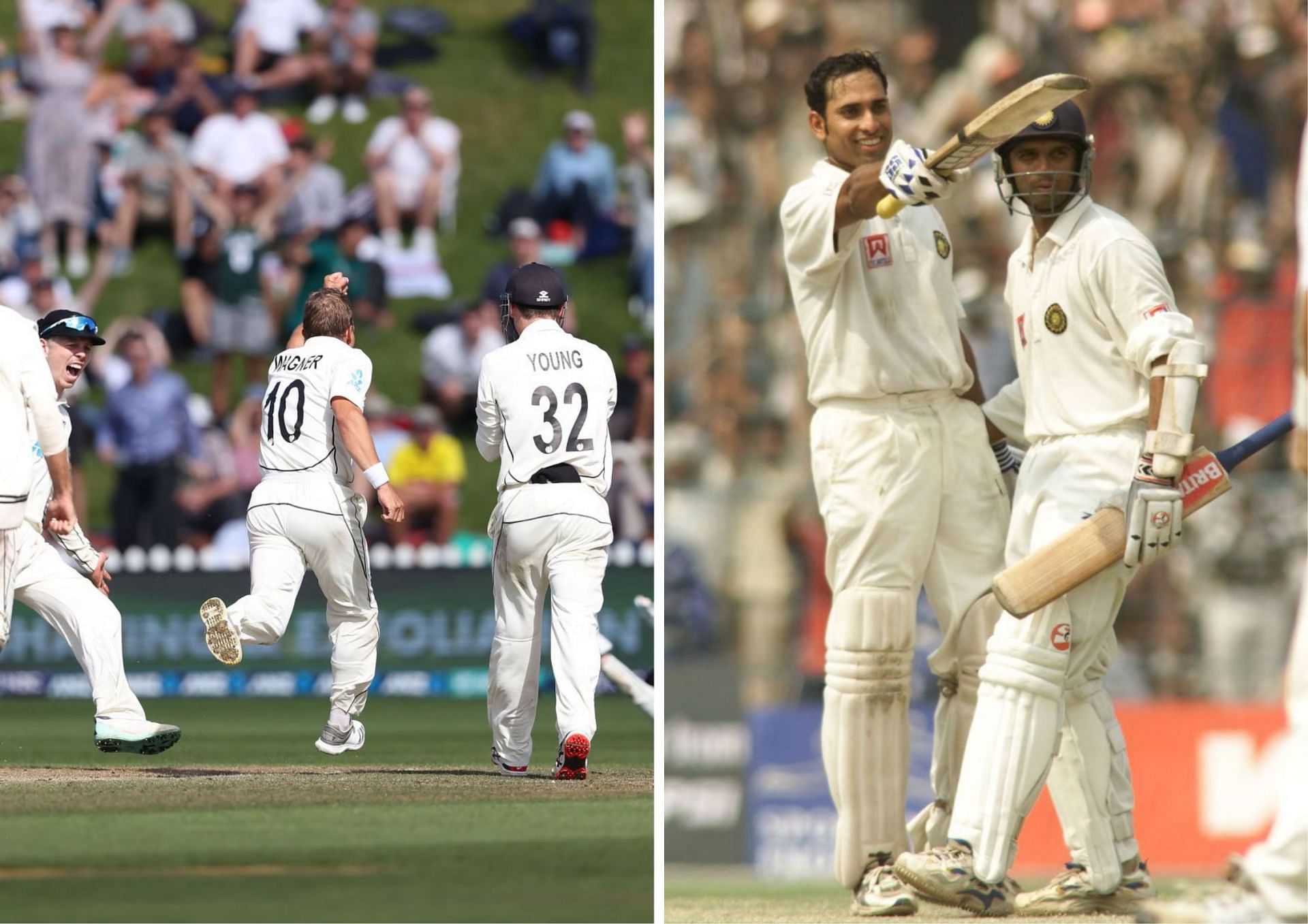
4 instances when enforcing the follow-on backfired for a team in Test cricket
Teams enforcing the follow-on in a Test isn't as common a phenomenon as it once used to be. Given how tough batting gets in the fourth innings, especially on a surface that breaks up, it is a chance that they often don't take.
There's another factor that teams often consider while making a decision with regards to a follow-on - the workload of their bowlers. If there happens to be sufficient time left in the Test, it makes sense to bat again and shut the doors on the opposition completely.
There have been very few instances, however, where a team has found itself on the wrong side of the result after having enforced the follow-on in a Test. To be specific, this has happened just four times, and we take a look at each of them below.
#1 Australia vs England in Sydney, 1894
The very first instance dates back to the 19th century, when Australia and England headlined another rendition of The Ashes at the Sydney Cricket Ground.
Having scored 586 in the first innings thanks to Syd Gregory's 201, Australia would have fancied their chances of wrapping things up after they bowled England out for 325. They chose to enforce the follow-on, although a more collective batting display led by Albert Ward's 117 saw England post 437 in the second essay.
Chasing 177 for victory, the Aussies were cruising at 130/2, before Bobby Peel and Johnny Briggs triggered a collapse. Wicket-keeper Jack Blackham was the last man to be dismissed as Peel scalped his sixth wicket of the innings to lead England to a famous 10-run victory.
#2 Australia vs England in Leeds, 1981
Another Ashes classic, one where Sir Ian Botham wrote himself into eternal cricketing folklore. This was also an extremely rare instance of a team enforcing the follow-on after declaring their first innings, only to go on and lose the Test.
Australia declared on 401/9, and after England were rolled over for 174, the game seemed lost for good. The Aussies enforced the follow-on but would not have anticipated what was to come.
The hosts were in dire straits at 135/7 before Botham reeled off an innings for the ages, counter-attacking his way to an unbeaten 149 off 148 deliveries. This, to go with a six-wicket haul and a half-century in the first essay.
Graham Dilley and Chris Old hung around with him as England ended with 356 in their second innings. Bob Willis then took over as he ripped the Australian batting unit to shreds with scarcely believable figures of 8/43. The Aussies crumbled in their chase of 130 as the hosts took the game by 18 runs.
#3 India vs Australia in Kolkata, 2001
Perhaps the most talked about Test of the lot is this 2001 Eden Gardens classic. India were trailing in the three-match series, and after they were forced to follow-on in the second innings of the 2nd Test, it seemed as though Australia would go on to complete a 17th consecutive win in the format.
But then, VVS Laxman and Rahul Dravid happened. A rearguard action from the duo, with Laxman moving up to No. 3 and Dravid battling fever, saw India go through the whole of Day 4 without losing a wicket. Doing so against an attack containing Glenn McGrath, Shane Warne, Jason Gillespie and Michael Kasprowicz made it all the more remarkable.
Laxman's 281 and Dravid's 180 saw India declare their second innings on 657/7 on the last day. Chasing an improbable 384, Australia wilted against Harbhajan Singh's mastery while Sachin Tendulkar also chipped in with three wickets.
India wrapped up a stunning come-from-behind 171-run victory that saw them level the series before winning it altogether in the final Test in Chennai.
#4 New Zealand vs England in Wellington, 2023
For a change, Australia weren't on the receiving end of the fourth instance of a team losing a Test after enforcing the follow-on. England, under the leadership duo of Ben Stokes and Brendon McCullum, have sparked their revival in the format with a cavalier and entertaining approach that has seen them push their limits.
Harry Brook's blistering 186 and Joe Root's unbeaten 153 powered them to 435/8, before England declared their innings to have a crack at New Zealand's batters before Lunch on Day 2. The move paid off as the hosts were in disarray before captain Tim Southee's 49-ball 73 salvaged some pride.
It wasn't enough to avoid a follow-on, though, as the visitors enforced it. Once the wicket at the Basin Reserve flattened out, the Blackcaps brought their A-game to the fore to tire the English attack. Kane Williamson's 133 and Tom Blundell's 90, apart from half-centuries from Tom Latham and Devon Conway, saw the hosts set England a target of 258.
Their bowlers, led by Neil Wagner, orchestrated a collapse on the final day, even as Root counter-attacked with a sumptuous 95 and Stokes dropped anchor to battle hard for his 33. Ben Foakes seemed to be getting the job done in the company of No. 10 Jack Leach, but once the former holed out, England required seven more runs to win.
James Anderson hacked one powerfully to the fence but was agonizingly strangled down the leg-side as New Zealand completed an incredible 1-run victory to level the series 1-1.
What is your take on teams enforcing the follow-on in a Test? Should they continue to do it? Let us know in the comments section below!
